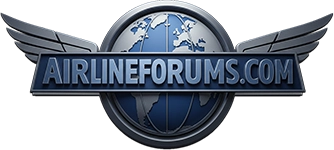Does the airbus require special training for a no flaps landing compared to the boeing? what is the difference between the two when it comes to that?
Robbedagain,
Also, most of the differences I’ve seen between the Airbus vs. other A/Cs is the extensive interface with computers.
A flap/slat failure is included on the Type Ride, I think, because it tests the Pilots knowledge and understanding of Computer integration as much, or more, than his airmanship skills.
Computers are usually the ones that first sense a problem with the Flaps and/or Slats. Depending on the phase of flight, whether the Plane is being cleaned up after T/O or configured for landing, there could be a GOTCHA on performing the ECAM actions using the computer generated electronic checklist. The Gotcha could result in an overspeed if absently performed thus inducing an inadvertent Wing Tip Brake (WTB) actuation preventing further movement. The AB seems to be sensitive to Flap Limits and costly to repair. All the other problems on the Boeing such as asymmetry, hydraulic failure, actuator failure, jamming and uncommanded actuation will lock the flaps and/or slats the same way.
Another thing uncommon to the Boeing are the various Flight Control Laws on the Airbus. Normal flight control inputs might be consistent for aircraft maneuvering on the Boeing. The Airbus, however, might transition through three phases of degradation affecting methods of aircraft control differently in each phase, as the crew sets up for landing.
Another point about the automation on the Airbus vs some Boeing aircraft is the computer generated performance/limitation displays. The Primary electronic flight display for a no-flap approach must be programmed differently changing standard computer generated performance parameters to correctly reflect the non-standard configuration.
Another fun part is the landing distance procedures. Here you must determine the multiplier for the various system failures then multiply the multipliers together taking the product of those multipliers and multiplying it times the landing distance unless one of the multipliers have an asterisk in which case you take the highest multiplier of the multipliers with asterisks and multiply this multiplier by the landing distance to arrive at the landing distance requirements... It’s a long story and a time consuming distraction of a manual mental exercise which is a gross contradiction to the advanced automation of the Aircraft. Like JetBlue, the USAirways Pilots should have laptops to quickly and efficiently handle these performance calculations.



